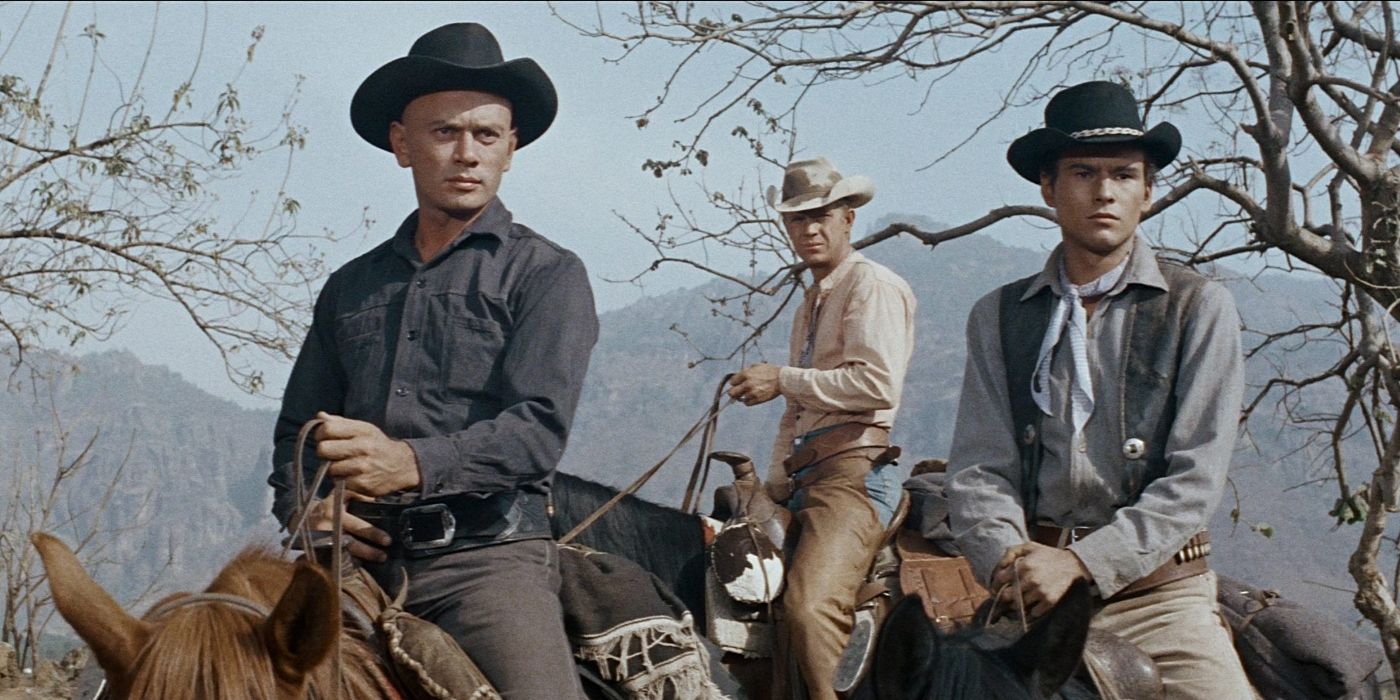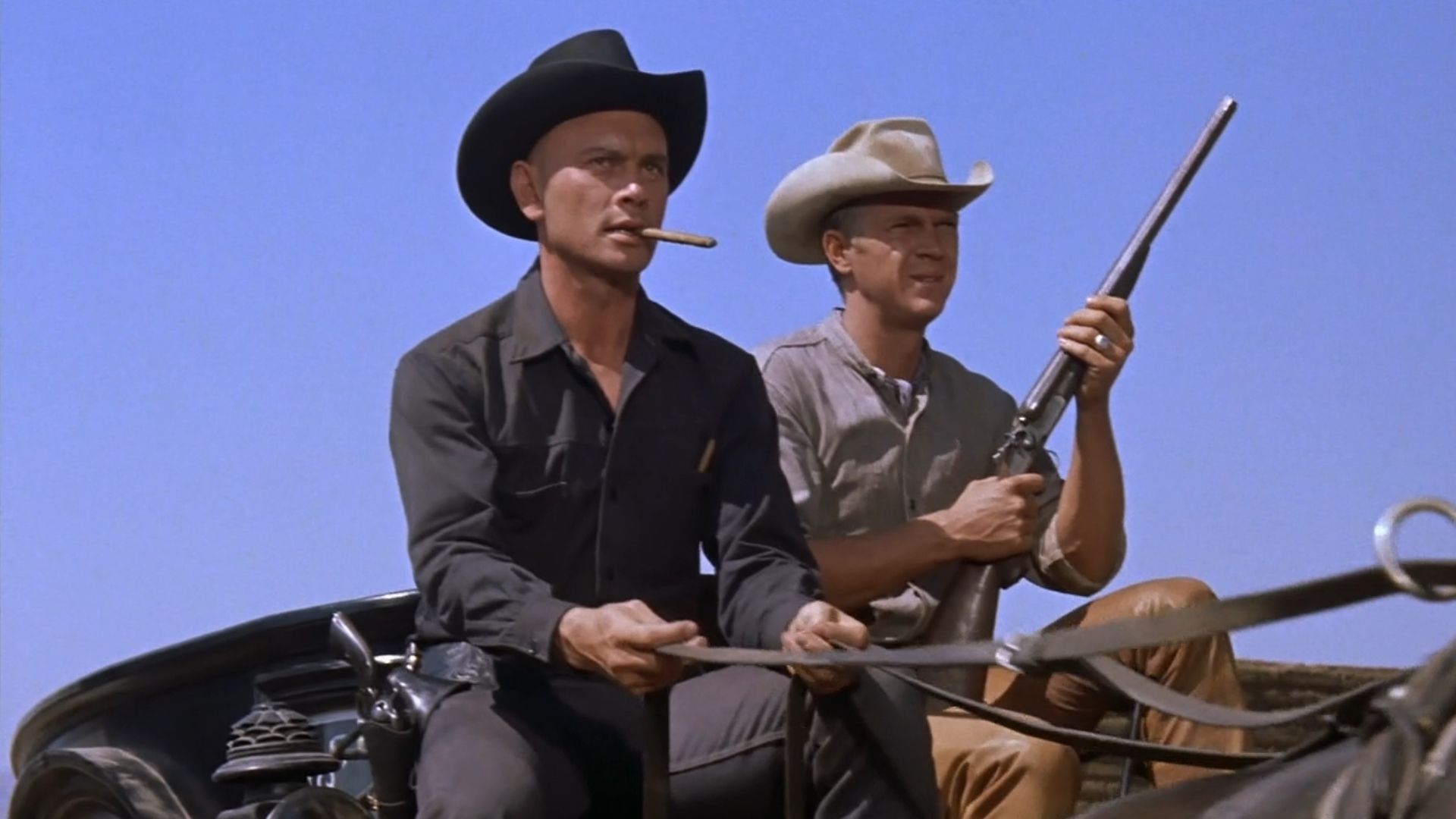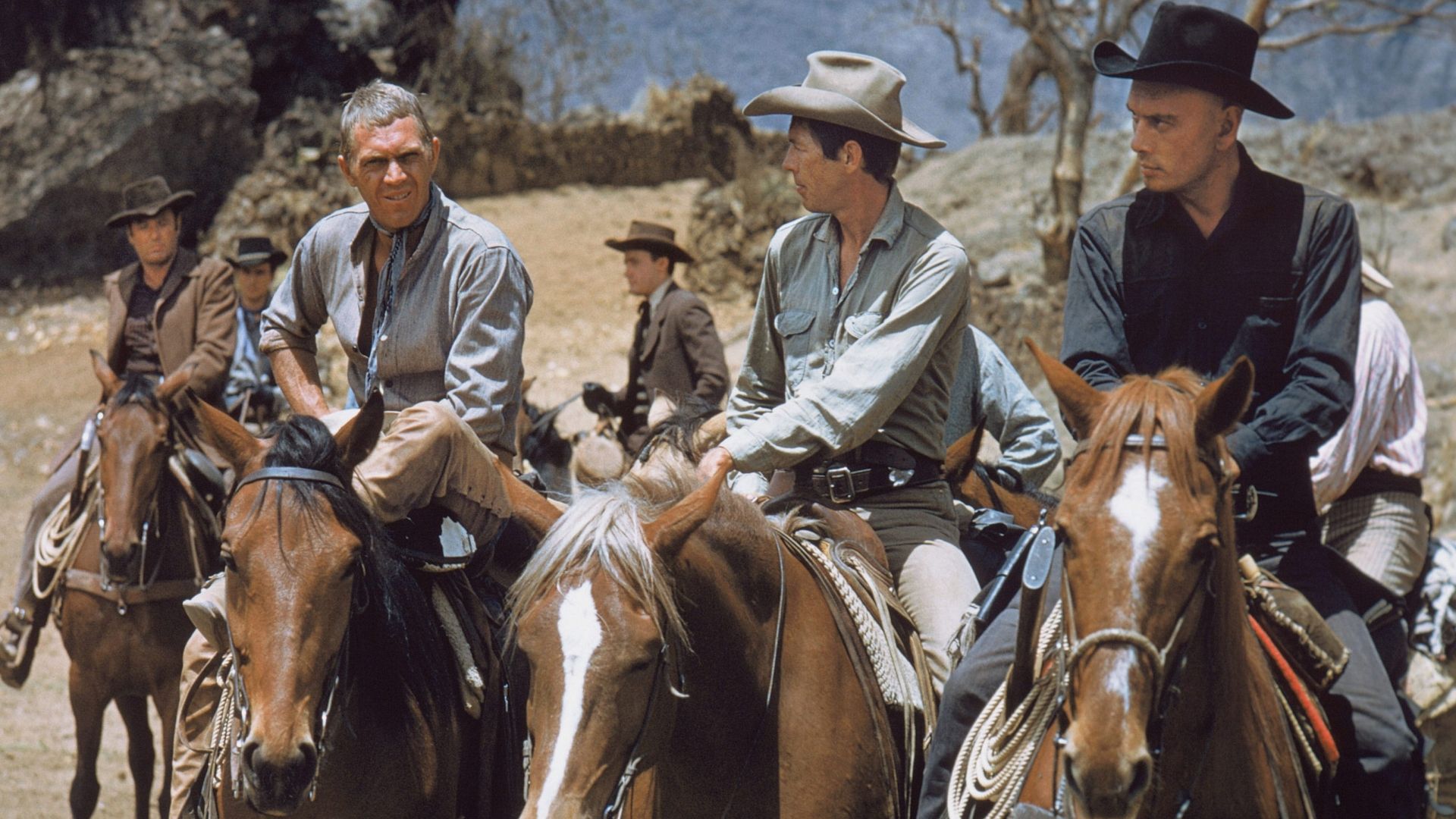
Among numerous movie genres that have evolved throughout cinema, one stands out as particularly American – the Western genre. Given its strong connection to the U.S.’s history and geography, it’s challenging to think of a Western not shaped by domestic media. However, this is exactly what happened with John Sturges’ 1960 Western epic, “The Magnificent Seven.” This film revolves around seven American gunfighters recruited to safeguard a Mexican village from marauders. Interestingly, it is a remake of the iconic Japanese filmmaker Akira Kurosawa’s masterpiece, “Seven Samurai” (1954), which clocks in at an impressive 200 minutes.
As a die-hard movie enthusiast, I’ve seen my fair share of film remakes, and most have been met with skepticism at best. However, The Magnificent Seven has managed to buck that trend, not only winning praise from critics but also carving out a legacy that rivals the legendary status of Seven Samurai. This iconic Western has inspired sequels, a TV series, and even its own remake in 2016, with countless cultural references in between. The American Film Institute (AFI) even named it one of the top 10 Westerns ever made!
Now, you might think that this film’s enduring appeal is due to its star-studded cast, adrenaline-fueled shootouts, or breathtaking landscapes – all of which are present in abundance. But what keeps it relevant 65 years later goes much deeper than that. So let’s delve into why The Magnificent Seven is more than just a remake cashing in on a classic Japanese tale.
‘The Magnificent Seven’ Has the Same Premise but Different Details

While both “The Magnificent Seven” and “Seven Samurai” share the same basic storyline, shifting the setting from 16th-century Japan to the United States and Mexico in the 19th century significantly changes their geographical and historical context. For example, where “Seven Samurai” focuses on a domestic scale (Japanese samurai protecting Japanese villagers), “The Magnificent Seven” plays out on an international stage (American gunslingers defending Mexican villagers). This cross-border setting adds an additional layer of emotion to the seven heroes’ mission. They are not merely safeguarding people from a lower socioeconomic class, but also those of different nationalities and ethnicities.
To put it simply, the movie initially portrays its main characters by demonstrating that they don’t harbor the racial and ethnic prejudices common among many of their American counterparts. A pivotal scene occurs when three villagers enter a small American town, seeking weapons to defend themselves against bandits. This event coincides with a discussion between a traveling salesman and the town’s undertaker, who is trying to convince him not to bury a deceased Native American man because the cemetery contains only white corpses. The undertaker is reluctant due to concerns that desegregating the cemetery might provoke violent reactions from the townspeople.
In a different phrasing, here’s how it goes: Chris Adams (played by Yul Brynner) and Vin Tanner (Steve McQueen), two wandering gunfighters, choose to carry the deceased man to the graveyard on their own. Although they were pointedly warned with guns at the cemetery gate, Chris and Vin stand firm and venture into the cemetery after a short conflict. This event leads the townsfolk to approach Chris for guidance, eventually employing him as one of their guards.
In this scene, we see not just a direct challenge to the racial prejudice often found in traditional Western films set during the Old West era, but also a veiled commentary on the segregationist Jim Crow laws that were prevalent across the United States in 1960.
Moreover, the film’s empathetic representation of Mexican people and their culture resonates significantly in today’s context, marked by the stigmatization and exclusion of individuals from Mexico and other Latin American countries. It’s significant to mention that the villagers in this movie are able to find safety from the outlaws because they can move freely across the U.S.-Mexico border, a border area that is highly disputed and heavily fortified today.
‘The Magnificent Seven’ Features a Legendary Score by a Legendary Composer

In addition to its distinct environment, a notable aspect that sets The Magnificent Seven apart from Seven Samurai is its captivating score, written by Elmer Bernstein. This score, which includes an iconic main theme, was ranked 8th among the most memorable film scores of all time by AFI. Upon listening to it, or hearing it, it’s easy to understand why. The score is both romantic and exhilarating, making the seven heroes’ mission to safeguard a solitary village seem as crucial as saving the entire world.
In a more relaxed phrasing: The boisterous violins and grand trumpets heard during the opening scene create a sharp difference compared to the ominous drumbeats in the opening credits of “Seven Samurai.” Moreover, although both films share similar endings, Bernstein’s theme makes the conclusion in “The Magnificent Seven” feel more inspiring than its counterpart in “Seven Samurai.
The change in mood during the opening credits indicates that The Magnificent Seven carries a more emotional tone compared to Seven Samurai. While Seven Samurai primarily concentrates on the actual fights, making it appear action-packed and lengthy, The Magnificent Seven emphasizes the preparation and downtime between battles, which are fewer and shorter than those in Seven Samurai.
In a different way of putting it, this isn’t always seen as criticism. Instead, taking a leisurely pace gives the remake of the Western story more opportunity to depict the main characters forming connections with the village residents. For example, one character like Bernardo (Charles Bronson), initially resistant, ends up bonding with a group of boys from the village who admire him greatly, much to his discomfort. These additional stories might appear insignificant and dull. However, they collectively strengthen the importance of the seven’s quest to vanquish the outlaws, while simultaneously developing the villagers as intricate and courageous characters in their own right, rather than mere helpless victims.
‘The Magnificent Seven’ Is a Rare Classic Remake
Just as a modern adaptation differs from its predecessor beyond mere casting changes, The Magnificent Seven skillfully preserves the fundamental aspects of Seven Samurai, yet injects enough unique elements to establish its own identity, tailored for its particular era and setting. The film’s ensemble cast, musical score, emotional intensity, and thought-provoking commentary enable it to break free from the influence of its source material and emerge as a timeless classic in its own right.
The Magnificent Seven is available to stream on Pluto TV, Tubi, and MGM+.
Read More
2025-05-24 22:38